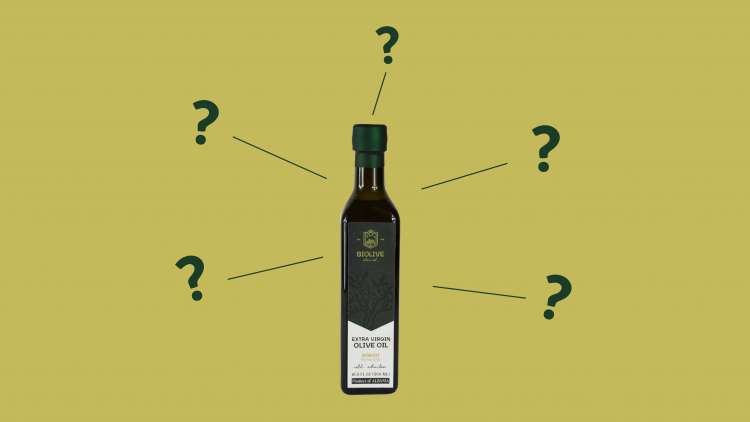“The debate over whether or not to filter olive oil is no longer relevant in our time. While unfiltered olive oil is renowned for its intense flavor and aroma, it is highly perishable and must be consumed within three months of production to prevent the sediment from acting as a breeding ground for a range of unwanted microorganisms. It is widely acknowledged that food meant for long-term storage must be kept as clean as possible, filtered, and stored in steel containers to ensure optimal quality. By removing wastewater and sediments, filtered olive oil is distinguished by its sharper flavors and elegant appearance. It is a wise choice for those seeking to savor the rich flavor of olive oil over an extended period.”
The beautiful journey of olive oil production starts with the harvesting of olives which are then transported to the mill. The olives are carefully washed and crushed to form a thick paste which undergoes malaxation or kneading. This paste is then fed to a centrifuge which spins it to separate the oil from the fruit flesh, pits, and water. The resulting olive oil then passes through a smaller centrifuge machine called the separator, which removes any remaining water and suspended solids.
After this transformation, olive oil is classified as extra virgin if it meets certain quality and sensory criteria, offering all the health benefits that high-quality olive oil provides.
Producers then have two options to bring their olive oil to market. They can either bottle the unfiltered olive oil as is or filter it, depending on the technique applied. Filtration or racking removes any remaining solid particles and moisture, resulting in a clear and pristine oil.
Filtered and unfiltered olive oil have distinct visual differences.
Unfiltered olive oil appears cloudy due to residual solids, while filtered olive oil is clear and free of impurities. Olive oil filtration is a crucial step in production, recommended by the International Olive Council to increase shelf life by removing solid microparticles and water. Most extra virgin olive oils available commercially are filtered. However, unfiltered olive oil, also known as cloudy or veiled, is preferred by some consumers who believe it has a richer flavor, aroma, and retains more polyphenols than filtered oil. Polyphenols are bioactive compounds responsible for many health benefits of olive oil. While some producers do not filter their oil, others take the extra step to achieve a clearer end product.
Olive oil is prone to losing its desirable characteristics if left unfiltered, as sediment comprising olive pulp particles and moisture, gradually accumulates at the bottom of the bottle, affecting the flavor and shelf life of the oil. The sediment has a clear decomposing effect, serving as a vehicle for droplets, vegetable water, air, mold, yeast, sugars, proteins, mucosae, microbes, and fungi, byproducts resulting from the fermentation of the oil in the bottle and can contribute directly to the modification of the oil's nutritional component.
Filtering results in clearer flavor and aromas to the oil, has a minimal effect on the content of polyphenols and other beneficial compounds, and extends the oil’s shelf life.
Filtering olive oil, especially during the production of extra virgin olive oil, is a demanding process that necessitates investment in equipment and expertise to be done effectively. By eliminating the moisture and any residual substances in the oil, olive oil filtering makes it transparent and ready for consumption. When it comes to early-harvested extra virgin olive oil (olio nuovo), filtering is typically avoided. This type of oil is best consumed within three months of the harvest date to fully enjoy its exceptional flavor and aroma.
Although some consumers may prefer unfiltered olive oil, this is a remnant of the past when the production process was more artisanal and filtering was limited to surface separation, which activated the fermentation process. In today's age, there should be no debate about olive oil filtering. It is easy to understand that food that is intended to be stored for an extended period must be as clean as possible, filtered, and stored in steel containers.
On the market, there are transparent bottles of olive oil with a centimeter of brown sediment at the bottom, which indicates rancid oil with unwanted flavors trapped inside. Generally, filtered olive oil is more attractive to consumers than unfiltered oil due to its transparency.
Filtered olive oil also has a longer shelf life; unfiltered olive oil is more susceptible to the effects of heat and light and should be consumed more quickly than filtered extra virgin olive oil. Unfiltered olive oil is often preferred by nostalgic shoppers looking for freshly-milled olive oil to be consumed immediately or within a couple of months. The distinction in nutritional components, such as polyphenols, between filtered and unfiltered olive oil is negligible. In the end, the polyphenol content in olive oil primarily corresponds to the variety and origin of olives and proper processing at the mill, rather than the filtration process.
When olive oil filtering is done properly and in a timely manner, both producers and consumers may benefit.
Source: Olive Oil Times


